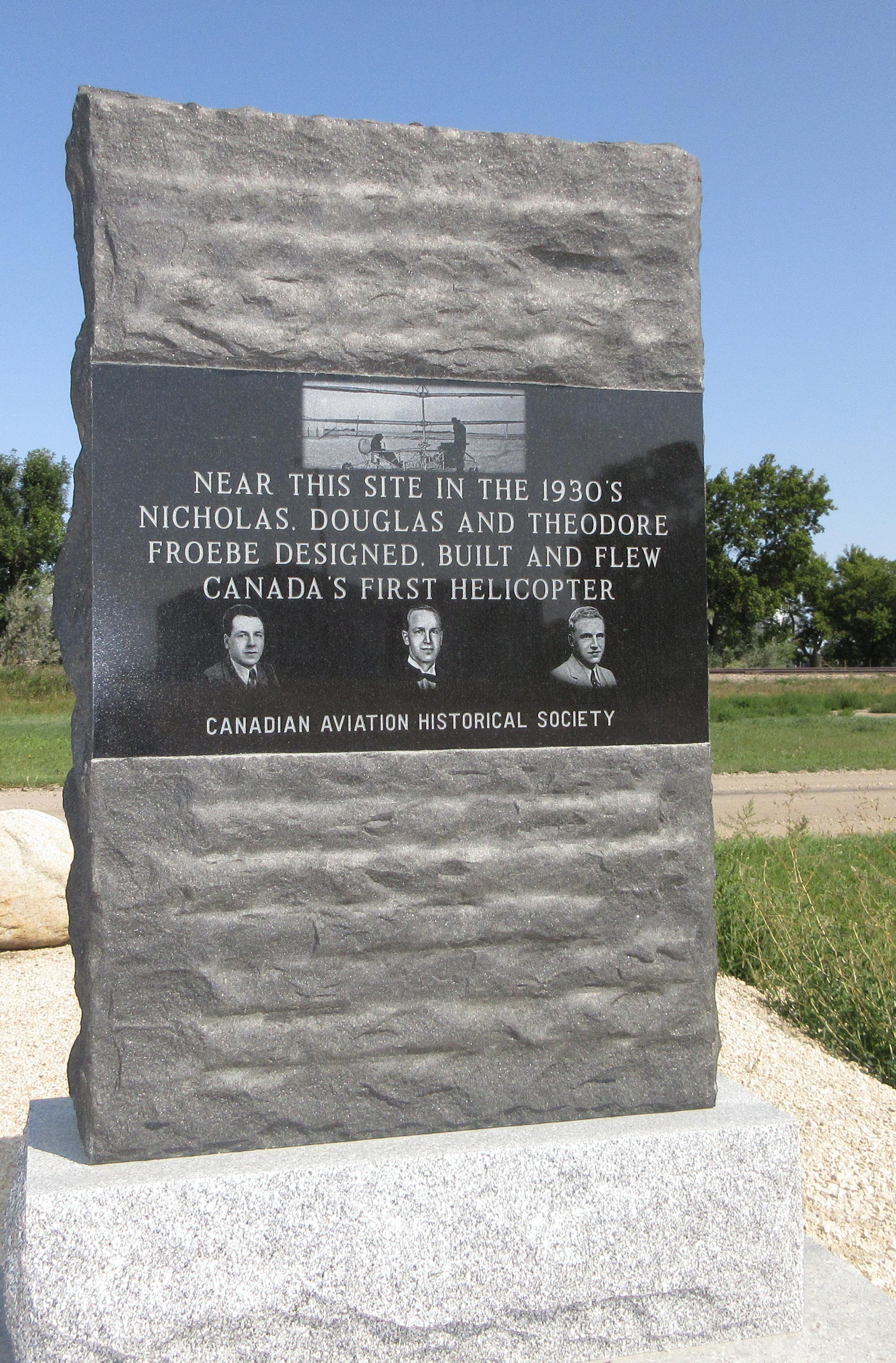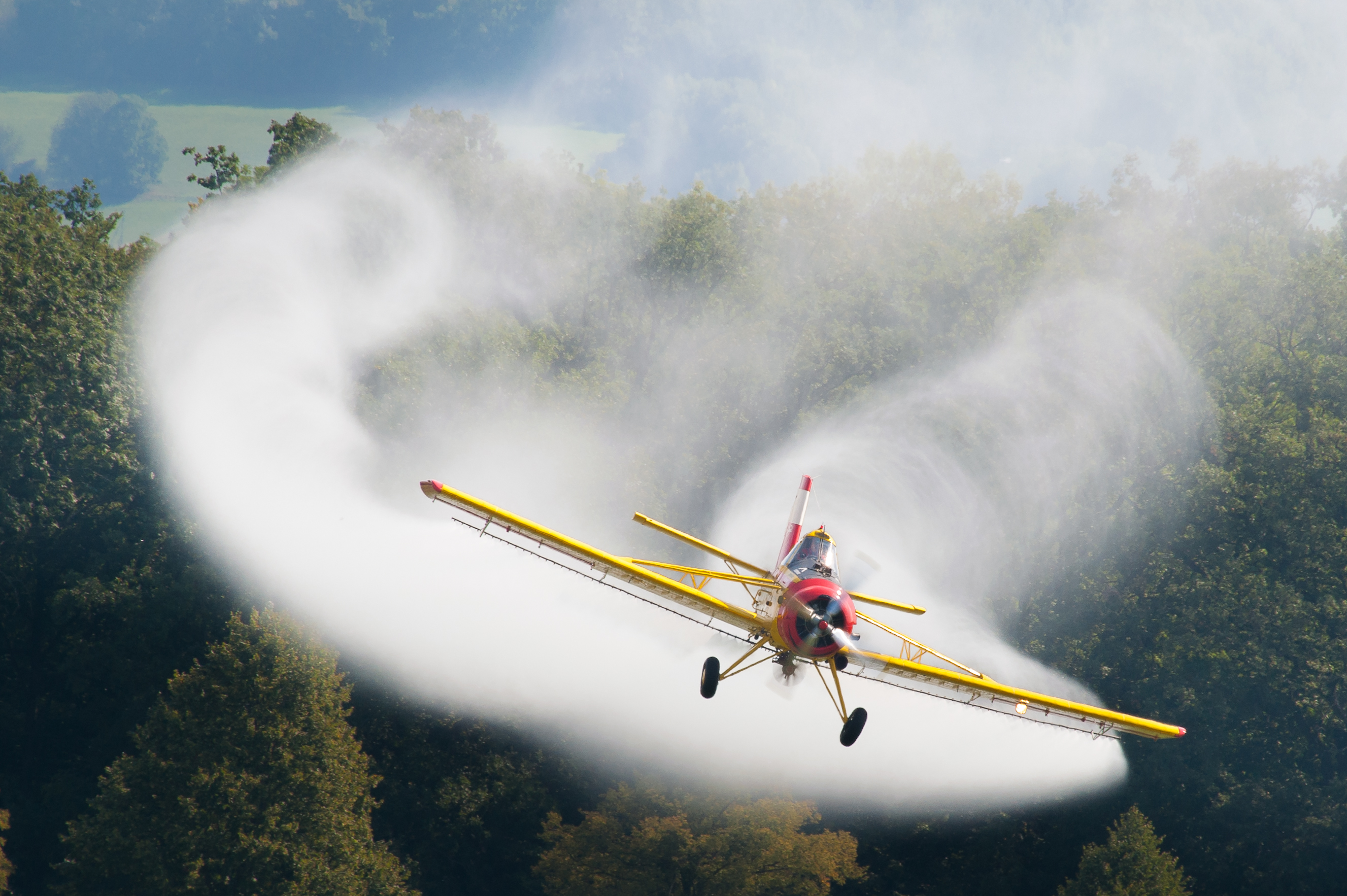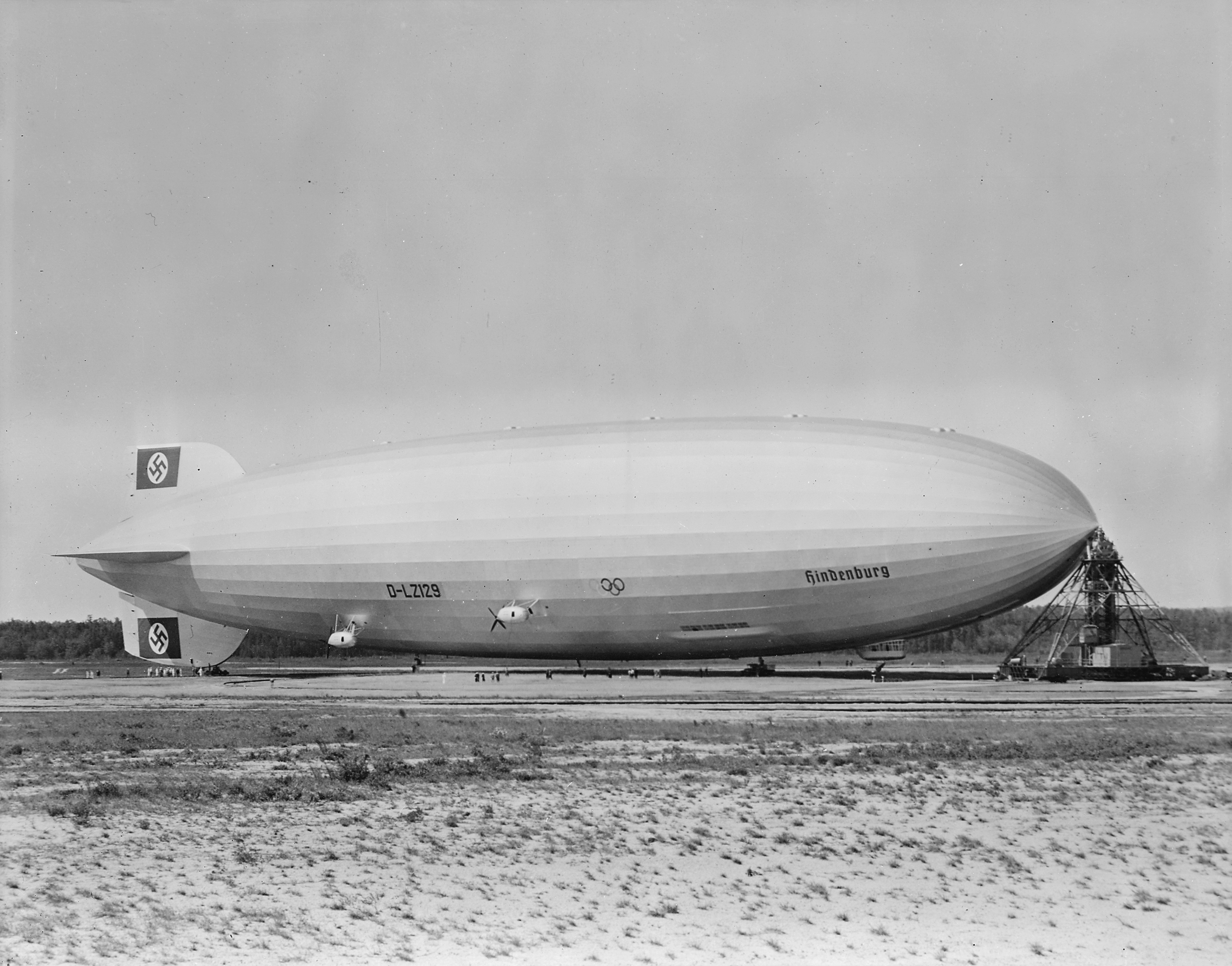|
Froebe Helicopter
The Froebe Helicopter was the first helicopter to be built and flown in Canada. It was built by brothers Doug, Theodore and Nicholas Froebe in the 1930s. The machine was constructed on a custom-made steel tubular frame using spare parts and equipment from automobiles, farm machinery and elsewhere. Fitted with a de Havilland Gipsy aero engine, it had twin concentric contra-rotating rotors of stainless steel tubing with fabric covering and with full cyclic and collective pitch control. The 98 hp available from the engine proved inadequate, but several test flights were made, the machine showing severe vibration. Work was then interrupted by the outbreak of the Second World War. The helicopter was stored in a granary and forgotten. A later generation of the Froebe family rediscovered it and donated it to the Royal Aviation Museum of Western Canada The Royal Aviation Museum of Western Canada (formerly the Western Canada Aviation Museum) is a museum in Winnipeg, Manitoba, Canada. ... [...More Info...] [...Related Items...] OR: [Wikipedia] [Google] [Baidu] |
Helicopter
A helicopter is a type of rotorcraft in which lift and thrust are supplied by horizontally spinning rotors. This allows the helicopter to take off and land vertically, to hover, and to fly forward, backward and laterally. These attributes allow helicopters to be used in congested or isolated areas where fixed-wing aircraft and many forms of STOL (Short TakeOff and Landing) or STOVL (Short TakeOff and Vertical Landing) aircraft cannot perform without a runway. In 1942, the Sikorsky R-4 became the first helicopter to reach full-scale production.Munson 1968.Hirschberg, Michael J. and David K. Dailey"Sikorsky". ''US and Russian Helicopter Development in the 20th Century'', American Helicopter Society, International. 7 July 2000. Although most earlier designs used more than one main rotor, the configuration of a single main rotor accompanied by a vertical anti-torque tail rotor (i.e. unicopter, not to be confused with the single-blade monocopter) has become the most comm ... [...More Info...] [...Related Items...] OR: [Wikipedia] [Google] [Baidu] |
Canada
Canada is a country in North America. Its ten provinces and three territories extend from the Atlantic Ocean to the Pacific Ocean and northward into the Arctic Ocean, covering over , making it the world's second-largest country by total area. Its southern and western border with the United States, stretching , is the world's longest binational land border. Canada's capital is Ottawa, and its three largest metropolitan areas are Toronto, Montreal, and Vancouver. Indigenous peoples have continuously inhabited what is now Canada for thousands of years. Beginning in the 16th century, British and French expeditions explored and later settled along the Atlantic coast. As a consequence of various armed conflicts, France ceded nearly all of its colonies in North America in 1763. In 1867, with the union of three British North American colonies through Confederation, Canada was formed as a federal dominion of four provinces. This began an accretion of provinces an ... [...More Info...] [...Related Items...] OR: [Wikipedia] [Google] [Baidu] |
De Havilland Gipsy
The de Havilland Gipsy is a British air-cooled four-cylinder in-line aircraft engine designed by Frank Halford in 1927 to replace the ADC Cirrus in the de Havilland DH.60 Moth light biplane. Initially developed as an upright 5 litre (300 cubic inch) capacity engine, later versions were designed to run inverted with increased capacity and power. The Gipsy went on to become one of the most popular sport aircraft engines of the inter-war period and was the engine of choice for various other light aircraft, trainers, liaison aircraft and air taxis, British as well as foreign, until long past World War II. Apart from helping to establish the de Havilland Aircraft Company as a manufacturer of light aircraft, it also established the company as an engine manufacturer in its own right. Gipsy engines remain in service powering vintage light aircraft. Design and development Just like the ADC Cirrus, the Gipsy was born as a collaboration between aircraft manufacturer Geoffre ... [...More Info...] [...Related Items...] OR: [Wikipedia] [Google] [Baidu] |
Stainless Steel
Stainless steel is an alloy of iron that is resistant to rusting and corrosion. It contains at least 11% chromium and may contain elements such as carbon, other nonmetals and metals to obtain other desired properties. Stainless steel's corrosion resistance, resistance to corrosion results from the chromium, which forms a Passivation (chemistry), passive film that can protect the material and self-healing material, self-heal in the presence of oxygen. The alloy's properties, such as luster and resistance to corrosion, are useful in many applications. Stainless steel can be rolled into Sheet metal, sheets, plates, bars, wire, and tubing. These can be used in cookware, cutlery, surgical instruments, major appliances, vehicles, construction material in large buildings, industrial equipment (e.g., in paper mills, chemical plants, water treatment), and storage tanks and tankers for chemicals and food products. The biological cleanability of stainless steel is superior to both alumi ... [...More Info...] [...Related Items...] OR: [Wikipedia] [Google] [Baidu] |
Helicopter Flight Controls
A helicopter pilot manipulates the helicopter flight controls to achieve and maintain controlled aerodynamic flight. Changes to the aircraft flight control system transmit mechanically to the rotor, producing aerodynamic effects on the rotor blades that make the helicopter move in a deliberate way. To tilt forward and back (pitch) or sideways (roll) requires that the controls alter the angle of attack of the main rotor blades ''cyclically'' during rotation, creating differing amounts of lift (force) at different points in the cycle. To increase or decrease overall lift requires that the controls alter the angle of attack for all blades ''collectively'' by equal amounts at the same time, resulting in ascent, descent, acceleration and deceleration. A typical helicopter has three flight control inputs—the cyclic stick, the collective lever, and the anti-torque pedals. Depending on the complexity of the helicopter, the cyclic and collective may be linked together by a ''mixing uni ... [...More Info...] [...Related Items...] OR: [Wikipedia] [Google] [Baidu] |
Royal Aviation Museum Of Western Canada
The Royal Aviation Museum of Western Canada (formerly the Western Canada Aviation Museum) is a museum in Winnipeg, Manitoba, Canada. The museum opened to the public in its new location on 21 May 2022. History The Western Canada Aviation Museum was incorporated in 1974.Ogden 1986, p. 26. In November of that year, it put forward an application to the federal government for a grant to set up a site at St. Andrews Airport. However, the museum ended up in downtown Winnipeg near the Manitoba Museum of Man and Nature. By the next year, the museum had 25 military and civilian aircraft in its collection. In the mid-1980s, the museum moved to a former Trans Canada Air Lines and Transair hangar, T-2, at Winnipeg International Airport. The museum developed a master plan for a new facility in 2013 with the design firm Reich&Petch. The museum received the ''Royal'' designation on December 19, 2014, to become the ''Royal Aviation Museum of Western Canada''. The museum closed its Ferry Roa ... [...More Info...] [...Related Items...] OR: [Wikipedia] [Google] [Baidu] |
Heath Parasol
The Heath Parasol is an American single or two seat, open-cockpit, parasol winged, homebuilt monoplane. Design and development In 1926, Edward Bayard Heath, a successful American air racer and the owner of an aircraft parts supply business, built the first example of the Heath Parasol, a small, single seat parasol winged airplane using surplus wings from a Thomas-Morse S-4, a World War One fighter trainer, mounted above a steel-tube structure fuselage and powered by a Henderson four-cylinder motorcycle engine. This was the prototype for a series of single and two-seat recreational craft that utilized the Clark Y airfoil. In 1929 ''Modern Mechanix'' magazine published the plans in a series and the plans were reprinted in their "1930 Flying & Gliding Manual," which in turn has been reprinted periodically by the EAA (Experimental Aircraft Association). Although Heath died in 1931 his Parasol designs remained extremely popular, being economical to build and operate as well as easy t ... [...More Info...] [...Related Items...] OR: [Wikipedia] [Google] [Baidu] |
Crop Dusting
Aerial application, or what is informally referred to as crop dusting, involves spraying crops with crop protection products from an agricultural aircraft. Planting certain types of seed are also included in aerial application. The specific spreading of fertilizer is also known as ''aerial topdressing ''in some countries. Many countries have severely limited aerial application of pesticides and other products because of environmental and public health hazards like spray drift; most notably, the European Union banned it outright with a few highly restricted exceptions in 2009, effectively ending the practice in all member states. Agricultural aircraft are highly specialized, purpose-built aircraft. Today's agricultural aircraft are often powered by turbine engines of up to and can carry as much as of crop protection product. Helicopters are sometimes used, and some aircraft serve double duty as water bombers in areas prone to wildfires. These aircraft are referred to as SEAT ... [...More Info...] [...Related Items...] OR: [Wikipedia] [Google] [Baidu] |
Canadian Inventions
Canadian inventions and discoveries are objects, processes, or techniques—invented, innovated, or discovered—that owe their existence either partially or entirely to a person born in Canada, a citizen of Canada, or a company or organization based in Canada. Some of these inventions were funded by National Research Council Canada (NRCC), which has been an important factor in innovation and technological advancement. Often, things discovered for the first time are also called inventions and in many cases, there is no clear line between the two. The following is a list of inventions, innovations or discoveries known or generally recognized to be Canadian. Inventions and improvements Notable Canadian inventions and improvements to existing technologies include: Computing, film, and animation * Archie (search engine) — the first internet search engine, invented by Alan Emtage at McGill University around 1988. * Film colorization — invented by Wilson Markle in 1983. ... [...More Info...] [...Related Items...] OR: [Wikipedia] [Google] [Baidu] |
Aviation History Of Canada
Aviation includes the activities surrounding mechanical flight and the aircraft industry. ''Aircraft'' includes fixed-wing and rotary-wing types, morphable wings, wing-less lifting bodies, as well as lighter-than-air craft such as hot air balloons and airships. Aviation began in the 18th century with the development of the hot air balloon, an apparatus capable of atmospheric displacement through buoyancy. Some of the most significant advancements in aviation technology came with the controlled gliding flying of Otto Lilienthal in 1896; then a large step in significance came with the construction of the first powered airplane by the Wright brothers in the early 1900s. Since that time, aviation has been technologically revolutionized by the introduction of the jet which permitted a major form of transport throughout the world. Etymology The word ''aviation'' was coined by the French writer and former naval officer Gabriel La Landelle in 1863. He derived the term from the v ... [...More Info...] [...Related Items...] OR: [Wikipedia] [Google] [Baidu] |
Aviation In Manitoba
Aviation includes the activities surrounding mechanical flight and the aircraft industry. ''Aircraft'' includes airplane, fixed-wing and helicopter, rotary-wing types, morphable wings, wing-less lifting bodies, as well as aerostat, lighter-than-air craft such as Balloon (aeronautics), hot air balloons and airships. Aviation began in the 18th century with the development of the hot air balloon, an apparatus capable of atmospheric displacement through buoyancy. Some of the most significant advancements in aviation technology came with the controlled gliding flying of Otto Lilienthal in 1896; then a large step in significance came with the construction of the first powered airplane by the Wright brothers in the early 1900s. Since that time, aviation has been technologically revolutionized by the introduction of the jet aircraft, jet which permitted a major form of transport throughout the world. Etymology The word ''aviation'' was coined by the French writer and former naval o ... [...More Info...] [...Related Items...] OR: [Wikipedia] [Google] [Baidu] |



.jpg)



